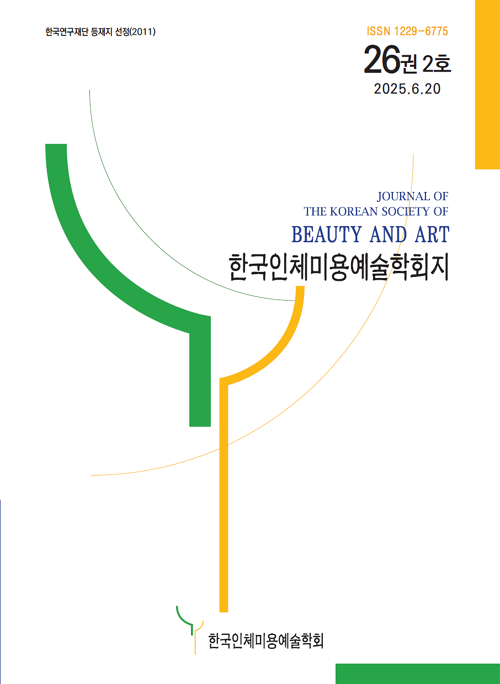AR 필터의 감각적 몰입에 대한 페르소나 형성과 외모만족도의 성별에 따른 차이 분석
Gender Differences in Persona Formation and Appearance Satisfaction upon AR Filter Sensory Immersion
- 한국인체미용예술학회
- 한국인체미용예술학회지
- 제26권 제2호
-
2025.06277 - 294 (18 pages)
-
DOI : 10.18693/jksba.2025.26.2.277
- 0

This study explores Gender Differences in Sensory Immersion, Persona Formation, and Appearance Satisfaction related to the use of Augmented Reality (AR) filters. With the growing prevalence of AR technology in digital self-presentation, particularly through social media, this research aims to analyze how male and female users engage differently with and respond to AR filters. A survey was conducted on 1,658 South Korean participants, evenly distributed across genders. In this study, data were sequentially analyzed using the statistical program SPSS 28.0. The results indicate that female users demonstrated significantly higher levels of Sensory Immersion and Ideal-Self Formation through AR filters compared to male users (p < .001). The results also indicated greater satisfaction with AR-enhanced appearance and a higher likelihood to share AR content and use filters before posting appearance-related images among females. In contrast, male users showed relatively higher levels of satisfaction with their actual body image. Notably, actual-self perception did not significantly differ by gender. Correlation analysis further revealed that Sensory Immersion positively correlated with most psychological factors, except for body satisfaction. Ideal-self formation was associated with external appearance evaluations but not with internal body satisfaction, suggesting a divergence between external presentation and internal self-image. These findings imply that AR filters not only influence how individuals curate their virtual identities but also reflect deeper gender-based psychological patterns related to body image and social perception. The study highlights the need for media literacy and self-awareness in the application of digital beauty tools, particularly among female users.
Ⅰ. 서론
Ⅱ. 사회 및 이론적 배경
Ⅲ. 내용 및 방법
Ⅳ. 연구결과
Ⅴ. 결론
참고문헌
(0)
(0)